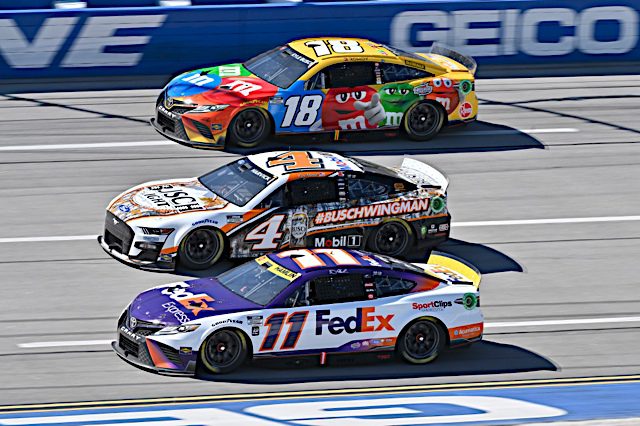NASCAR’s Cup Series playoffs got off to a wild start in 2022. The first three races all ended with drivers outside the playoffs visiting victory lane. Round two’s opening race at Texas Motor Speedway saw Tyler Reddick, who was eliminated from the playoffs after a difficult first round, capture the checkered flag.
But at Talladega Superspeedway this past weekend, the one track where you can almost guarantee that chaos and unpredictability will reign supreme, the race was surprisingly orderly. There was only one multi-car crash early in the race. Most of the playoff drivers got through the afternoon unscathed, even those who were fighting for the win during the final green flag laps. It certainly was not a boring race; the competition was still as fierce as you would expect at Talladega. But rather than throwing caution to the wind, as so often happens at superspeedway races, the drivers of the Cup Series raced with strategic restraint.
Why such a change from the usual Talladega wreckfest? It all goes back to the past few weeks and the drivers’ increasing dissatisfaction with the Next Gen car. The races at Texas and Bristol Motor Speedway were marred by equipment failures. Tire blowouts were common in both races. The tire problems at Texas, in particular, were responsible for several hard crashes, often among drivers leading the race or competing for the win.
Of all the crashes at Texas, Alex Bowman’s incident did the most to put the Next Gen car under a microscope. Bowman’s car snapped around and backed into the turn 4 wall on lap 97, taking the No. 48 out of contention. Days later, Bowman began experiencing concussion-like symptoms and was not cleared to race at Talladega. Although Bowman’s crash did not look like an exceptionally hard hit, he reported that it felt like the hardest crash he had ever taken. Further, the wreck shared a similar look to Kurt Busch’s qualifying crash at Pocono Raceway from earlier this year, which has kept Busch sidelined ever since.
It’s one thing if a driver like Busch, who has raced in NASCAR for over 20 years, has a concussion. Any injury is bad enough, but Busch is 44 and probably experienced concussions earlier in his career. He may have even raced with one at a time when NASCAR was far less proactive about monitoring head injuries. But if Bowman, who is not yet 30 and has had a much shorter Cup Series career, suffered a concussion due to the rigid design of the Next Gen car, that should set off…
Click Here to Read the Full Original Article at Frontstretch…

